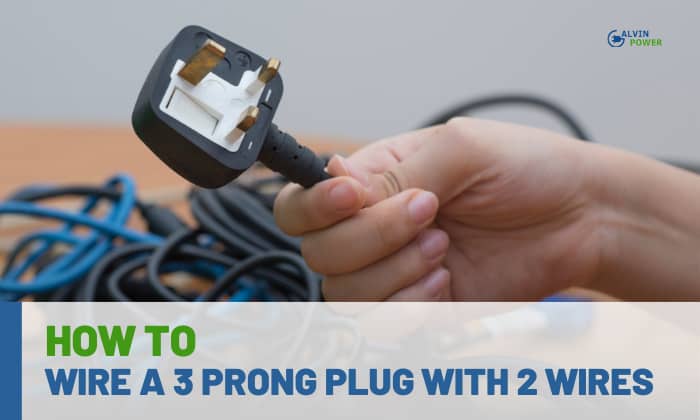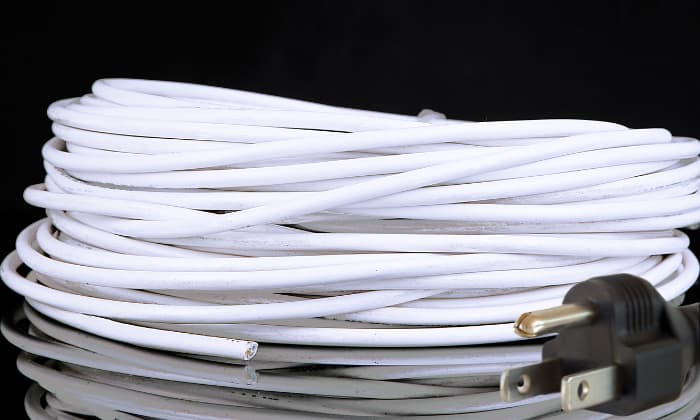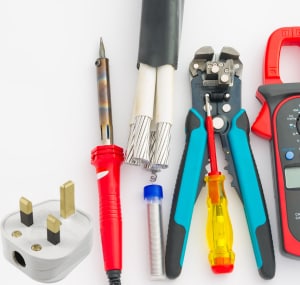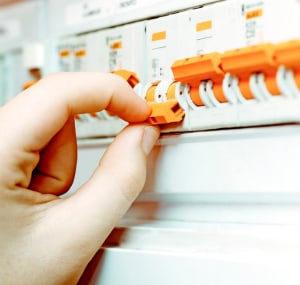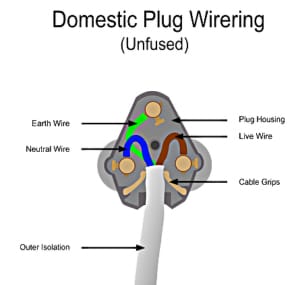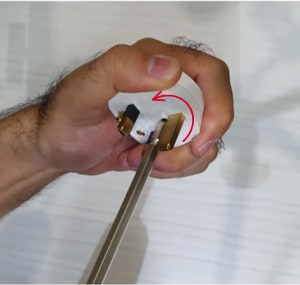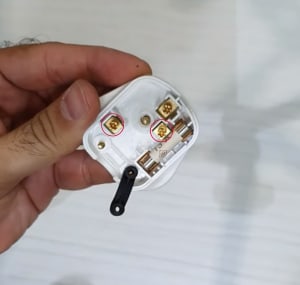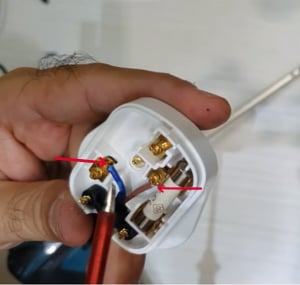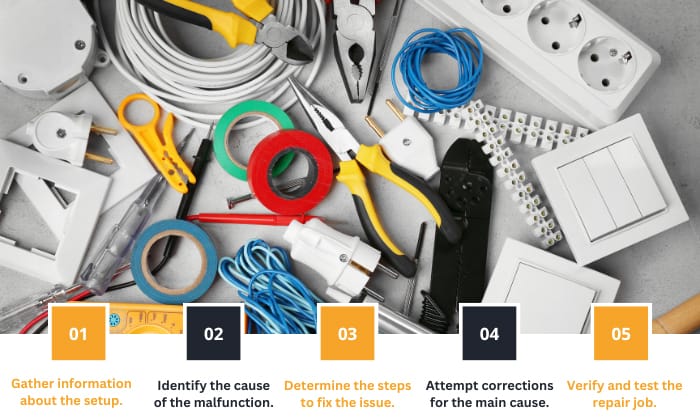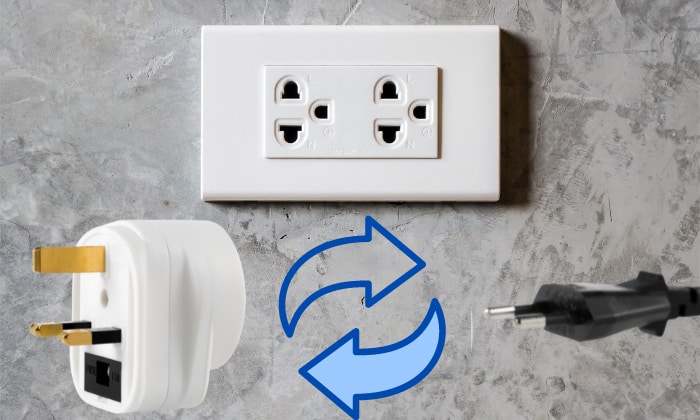Perhaps you’re doing some rewiring in your home. Now, you want to know how to wire a 3 prong plug with 2 wires.
Wiring a 3-prong plug with two wires is possible using certain methods. One way to complete this task is to connect the two hot or live wires to two prongs. Doing so leaves the other prong empty.
Remember, working with electricity means paying attention to the tools used and the steps to undertake. Preparing for this task will help yield the appropriate and safe results.
Table of Contents
Ways to Wire a 3 Prong Plug With 2 Wires
What to prepare
- 3-prong plug
- Screwdriver
- Utility knife
- Wire crimper
Safety precautions while wiring
Before starting any task involving electricity, especially when you want to change a plug, follow these important safety precautions:
- Turn off the power, particularly to the outlet where the plug will go.
- Avoid stripping or splicing the wires on your hand to prevent cuts and injuries.
- Don’t use low-quality parts to prevent short- and long-term electrical issues.
- Fix fuse and circuit breaker problems before wiring a three pronged plug.
Also, identify the elements of a plug. For instance, know which wire is hot and which wire is neutral. Connecting the wrong wire to an inappropriate connector may result in issues like reverse polarity.
The polarities of the 3-prong plug pins
As mentioned earlier, reversing the polarities of the wiring connection can lead to electrical problems. Note the following wiring pins when connecting wires to plug:
Step 1: Open the plug casing
Use a screwdriver and remove the screw of the 3-prong plug’s case. Ensure that the casing of the connector isn’t live or generating electricity.
Step 2: Locate and identify the connectors
With the casing opened, look for and identify the connectors for the live, ground/earth, and neutral wires. Check the plug’s wiring diagram if you’re unsure about the appearances or locations of these elements.
Step 3: Rewiring a plug with 2 wires
Start wiring a plug with two wires by using a utility knife or wire crimper to strip one end of one of the wires. Be careful not to put significant pressure on your cutting tool so as not to remove the wire’s protective coating.
With the wire’s shell partially removed, split the two newly revealed wires. They should have different colours, such as brown and blue. Again, strip the ends of these two wires to reveal their copper elements.
Rotate the wires’ copper elements and bend them. Next, attach one of the wires to the neutral bus and the other to the live terminal. Secure the power cord wiring and close the plug’s casing.
Troubleshooting Common Wiring Issues
First, don’t panic if you run into a problem as you wire your plugs. Anxiety and dread may cloud your thinking, leading to additional issues.
Instead, breathe and clear your mind. Next, follow these general steps as you troubleshoot and repair the failed process of wiring a 3 prong outlet:
- Gather as much information as possible about the setup.
- Find the cause of the malfunction and understand why it occurred.
- Identify the steps needed to fix the issue.
- Attempt corrections to the main cause of the problem. For example, if you connected the wrong wires to the pins, see if the plug states the colors of its conductors. Black often represents a hot wire, while white stands for neutral and green for ground.
- Verify the repair job and test the results.
Request help from a professional electrician if you still need help with this task. Stop attempting to fix the issue, especially if you don’t know its root cause. Otherwise, you might aggravate the problem, leading to additional complications.
FAQs
What Is The Difference Between 2 Prong And 3 Prong Plugs?
A 3-prong plug has one more prong than a 2-prong variant, which helps it ground an outlet and prevent electrocution. However, both 3- and 2-prong plugs have hot or live and neutral wires.
How To Connect 3 Wire To 2 Wire Lighting Fixtures?
Place a wire nut over the exposed conductor on the red wire of your supply cable, and cover the whole thing with electrical tape.
Strip one end of the black and white wires, then connect the black supply wire to the black cable on the light with wire nuts. Do the same with the white wires (one for the circuit, the other for the light), then cover both connections with electrical tape.
How Can I Tell If My Plug Is Wired Correctly?
If you ran into problems after wiring a plug, you should first identify the cause of the problem. Note that identifying if your plug has the correct wiring setup means looking at certain signs.
For instance, the plug has reversed connections if the wires aren’t in their correct terminals. Another issue you may encounter is if the plug has grounding but the outlet doesn’t. If so, you may need to convert the outlet for it to have this feature.
What Is The Third Prong On A Wire Called?
The third prong on a plug or wire is the ground. Also called the ground prong or grounding wire, it protects connected electronic devices from irreparable harm that might occur from sudden electrical surges.
Are Red And Black Wires Live Wires?
Both are hot or live wires. But a black wire typically runs to the switch’s electrical outlet. On the other hand, red electrical plug wiring is usually for a 240-volt outlet, a wall outlet, or a three-way switch.
What Is The Difference Between A 4- Prong And 3 Prong Generator Plug?
3-prong generator plugs typically only carry 120 volts. But 4-prong generator plugs generally have 120 to 240 volts, making these models more popular for people who use a lot of power.
Conclusion
Remember, how to wire a 3 prong plug with 2 wires starts with following the correct safety protocols. Gather the appropriate tools, such as a utility knife, screwdriver, and the correct wires before following the steps above.
You can also troubleshoot the plug if you have problems after wiring it. However, don’t hesitate to contact a professional electrician if troubleshooting and attempting repairs to the wire didn’t yield proper results.

I am Edwin Jones, in charge of designing content for Galvinpower. I aspire to use my experiences in marketing to create reliable and necessary information to help our readers. It has been fun to work with Andrew and apply his incredible knowledge to our content.

